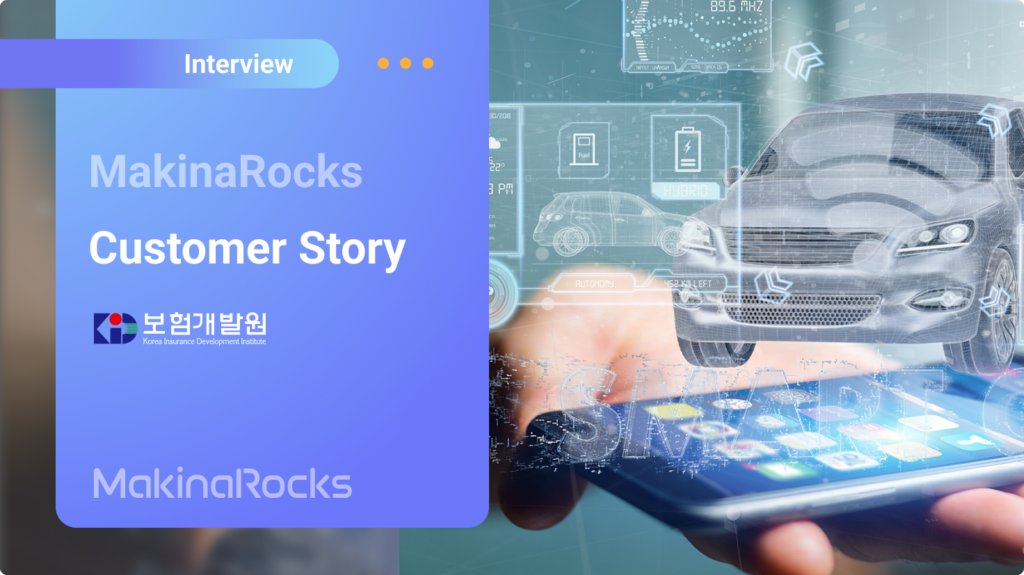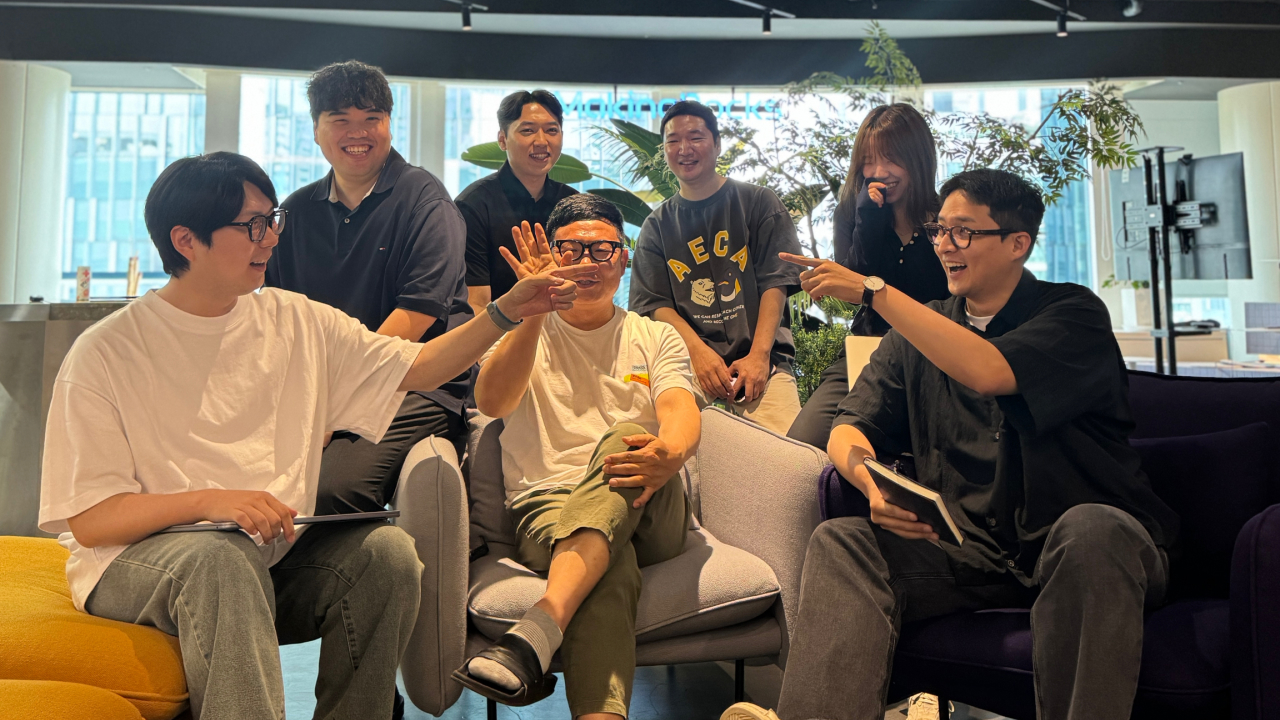When a car accident is serious enough to send your vehicle to the repair shop, that’s when insurance truly matters. Insurance companies help injured victims recover by quickly assessing damages, covering medical treatment, and coordinating smooth communication between repair shops — ensuring repairs are handled efficiently. Today, AI is transforming this process. The Korea Insurance Development Institute (KIDI) has developed AOSα (Automobile repair cost On-line Service alpha), an AI-based automated system that estimates auto repair costs in real time.
“AOSα connects insurance companies and repair shops seamlessly. Previously, adjusters had to manually review accident photos to calculate repair costs. Now, AI automates the analysis and delivers faster, more accurate results.”
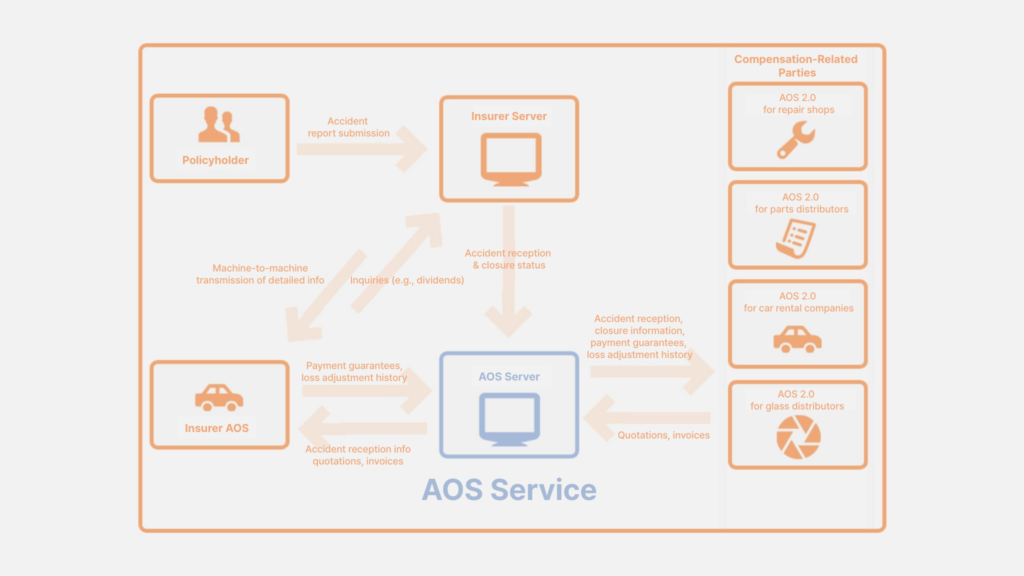
Overview of KIDI’s AOS service network
AOSα is an online system that manages accident reporting, repair billing, and damage assessment between repair shops and insurance companies. It is widely used across Korea, helping streamline the claims process for both sides. Using deep learning-based image analysis, AOSα automatically detects damaged parts, recognizes license plates, and links insurance policy information—significantly reducing the workload for claims staff, speeding up negotiations, and enhancing the customer experience. While AOSα successfully standardized much of the claims workflow, KIDI saw an opportunity to go even further—to make the process faster, smarter, and even more precise. To achieve this, KIDI set out to dramatically enhance AOSα by combining its vast vehicle repair database with MakinaRocks’ AI platform, Runway. What role did Runway play in this transformation? We spoke with Hyunwoong Jang, Senior Researcher at the Korea Insurance Development Institute, to find out.
Why the Korea Insurance Development Institute Chose Runway

Scalable and reliable AI operations start here — with MakinaRocks’ AI platform, Runway
In 2024, the Korea Insurance Development Institute chose to move from its previous AI platform to Runway. AI services need to maintain high performance even as data changes and external conditions evolve. To ensure consistency in service quality, it’s essential to have an AI platform that supports the entire AI lifecycle: from model development and deployment to retraining and operation. For KIDI, building this foundation was critical. Their work involves using multiple AI models to analyze vehicle accident images, and these models must adapt whenever new car models are released—requiring updates to frames, parts, and other related data. This complexity made adopting a flexible, scalable AI platform a top priority.
“To improve AI model performance, we needed seamless retraining, and a platform tailored to meet our unique needs.”
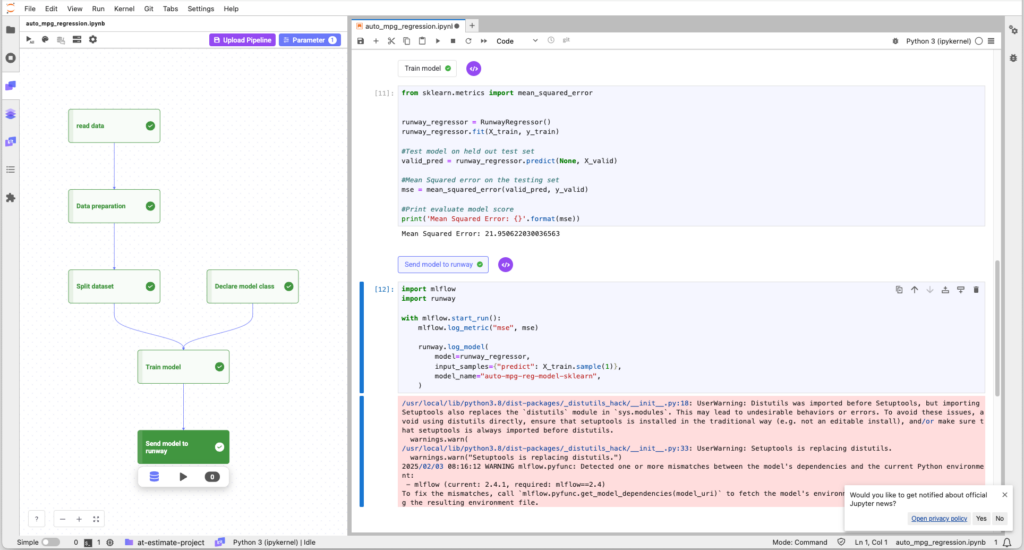
MakinaRocks’ Runway provides a flexible development environment for data analysts and developers, with pipelines that make model iteration and deployment fast and reliable.
Migrating AI platforms is never simple—it’s closely tied to an organization’s data, development workflows, teams, and infrastructure. For KIDI, the challenge was even greater due to strict security requirements in the financial sector, including the need to build the platform on-premises to comply with network separation policies.
Despite these constraints, the institute recognized that an AI platform without retraining and maintenance capabilities would be difficult to maintain and scale over time. Early on, they identified the need for a scalable, secure AI foundation. Runway met that need—offering robust on-premises deployment, support for high-traffic workloads, access to AI experts for tailored setup, and the flexibility to expand AI applications across future business areas.
Secrets to Delivering Reliable Real-Time AI Services
To estimate auto repair costs in real time, multiple AI models must work seamlessly together—handling tasks such as image filtering, part recognition, damage classification, and repair type prediction. Achieving both speed and accuracy across this pipeline is no small feat. With Runway, KIDI has automated the retraining and deployment of these models—covering not only accident image analysis but also the management of image data for newly released vehicle models. Runway's performance monitoring capabilities enable continuous optimization, helping the team proactively track and improve model accuracy. Since launching AOSα in 2019, KIDI has seen a marked improvement in AI performance.
“AOS handles around 300,000 auto repair claims each month. Internally, we’re processing about 7 million requests daily—securely and reliably. Runway enables this with a structural advantage: the service completes in just 1.5 seconds. Not many AI platforms support gRPC the way Runway does.”
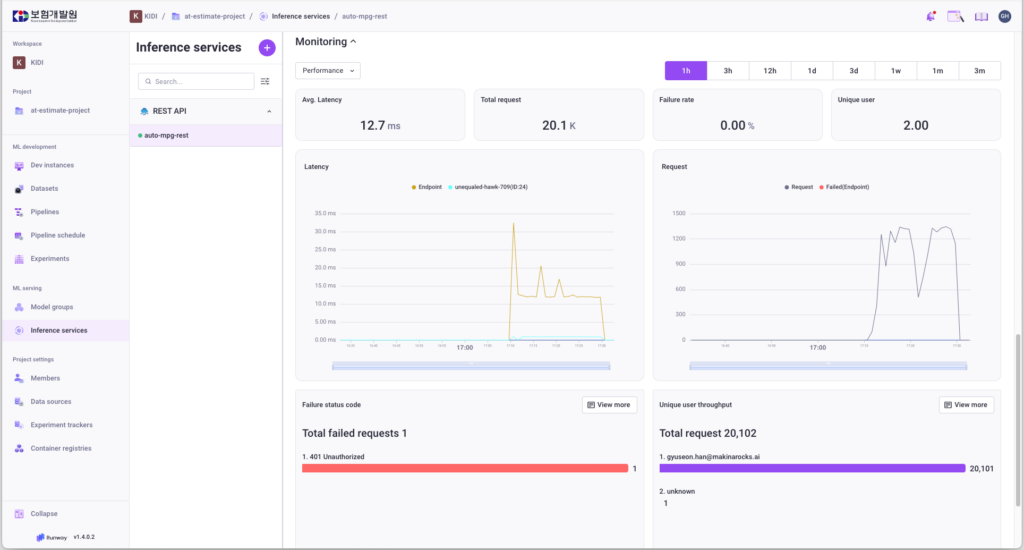
Runway provides visibility into model performance and inference logs, ensuring reliable, scalable AI operations
Inside the AOSα system, nearly 7 million requests are processed daily. Each request can generate up to 200 to 300 internal transactions per second (TPS), all completed reliably within just 1.5 seconds. This level of performance is enabled by Runway’s ability to operate around 20 AI models simultaneously, while maintaining strong security and stability under high-traffic conditions.
Deployed on-premises, Runway effectively manages large-scale data and complex traffic using features like auto-scaling and gRPC (Google Remote Procedure Call). These capabilities enable efficient resource allocation, prevent system overload, and ensure seamless service—even when multiple AI models are running concurrently.
Understanding that system architecture is crucial to real-time AI performance, KIDI built a robust infrastructure. The development and production environments are completely separated, ensuring development activity never affects live services. The production environment is further reinforced with a high-availability (HA) configuration using three master nodes, with a clear separation between master and worker nodes to optimize load balancing and operational efficiency. As a result, AOSα delivers uninterrupted, real-time AI services—even under peak demand.
The answer was always yes: Reliable support that delivers
When considering a platform migration, KIDI explored various options—including developing an in-house solution. However, concerns quickly surfaced around long-term maintenance. As a non-IT organization, the institute recognized the risks: if key personnel were reassigned or left the project, managing a homegrown system could become unsustainable. This led KIDI to choose Runway—a secure, easy-to-maintain, domestic AI platform backed by reliable, expert support.
“No was never an answer. The team at MakinaRocks was always ready to help.”
A dedicated team at MakinaRocks supported KIDI throughout the transition to Runway. Led by PM Gyuseon Han, the Runway Delivery Team played a key role in the project’s success. With deep expertise in Runway, Han responded quickly to technical issues—at times even stepping in during holidays to keep things moving. His persistence in troubleshooting complex problems helped ensure stable operations from the start. The Runway Delivery Team’s personalized and professional support gave the institute the confidence to move forward, leading to the successful deployment of their AI services.
Runway: The foundation for KIDI’s AI growth

Runway enables scalable AI operations by flexibly allocating resources by project and task—without requiring major changes to existing infrastructure
The Korea Automotive Technology Institute at KIDI, which oversees the AOSα service, operates the largest number of GPU servers within the organization—forming the core infrastructure of its AI capabilities. Leveraging this foundation, the institute adopted Runway as its AI platform, enabling departments across the organization to easily build and scale their own AI environments.
Starting with AOSα’s real-time repair cost estimation service, the institute is now expanding its AI initiatives to include services such as AI-based used car price prediction and LLM-powered advanced repair cost estimation.
With Runway firmly in place and the first upgrade project completed successfully, it’s now easier than ever for the institute to apply AI across other business areas. Once confidence in the AI model and platform is established, there are fewer technical barriers—allowing teams to reduce operational costs and increase efficiency by leveraging the existing Runway infrastructure. Runway is now a key enabler, accelerating KIDI’s broader adoption and expansion of AI technologies.
Choosing the right AI platform—We recommend Runway
Before choosing an AI platform, it’s worth asking: “Do we really need one?” The answer depends on your organization’s AI strategy. If you’re building a one-off AI service on a GPU server, an AI platform may not be necessary. But if you’re planning to scale AI across teams, retrain models regularly, and deploy reliably, an AI platform becomes essential.
As shown by KIDI’s AOSα service, a well-designed AI platform enables reliable, scalable AI services through the standardization and automation of development, deployment, and inference result management.
AI platforms are not one-size-fits-all. Depending on the size and needs of your organization, the right choice will vary. But if you’re looking for a flexible, secure, and production-ready AI platform that adapts to your infrastructure—we recommend MakinaRocks Runway.
Note: This post was translated from the original Korean version by Kyoungyeon Kim.

